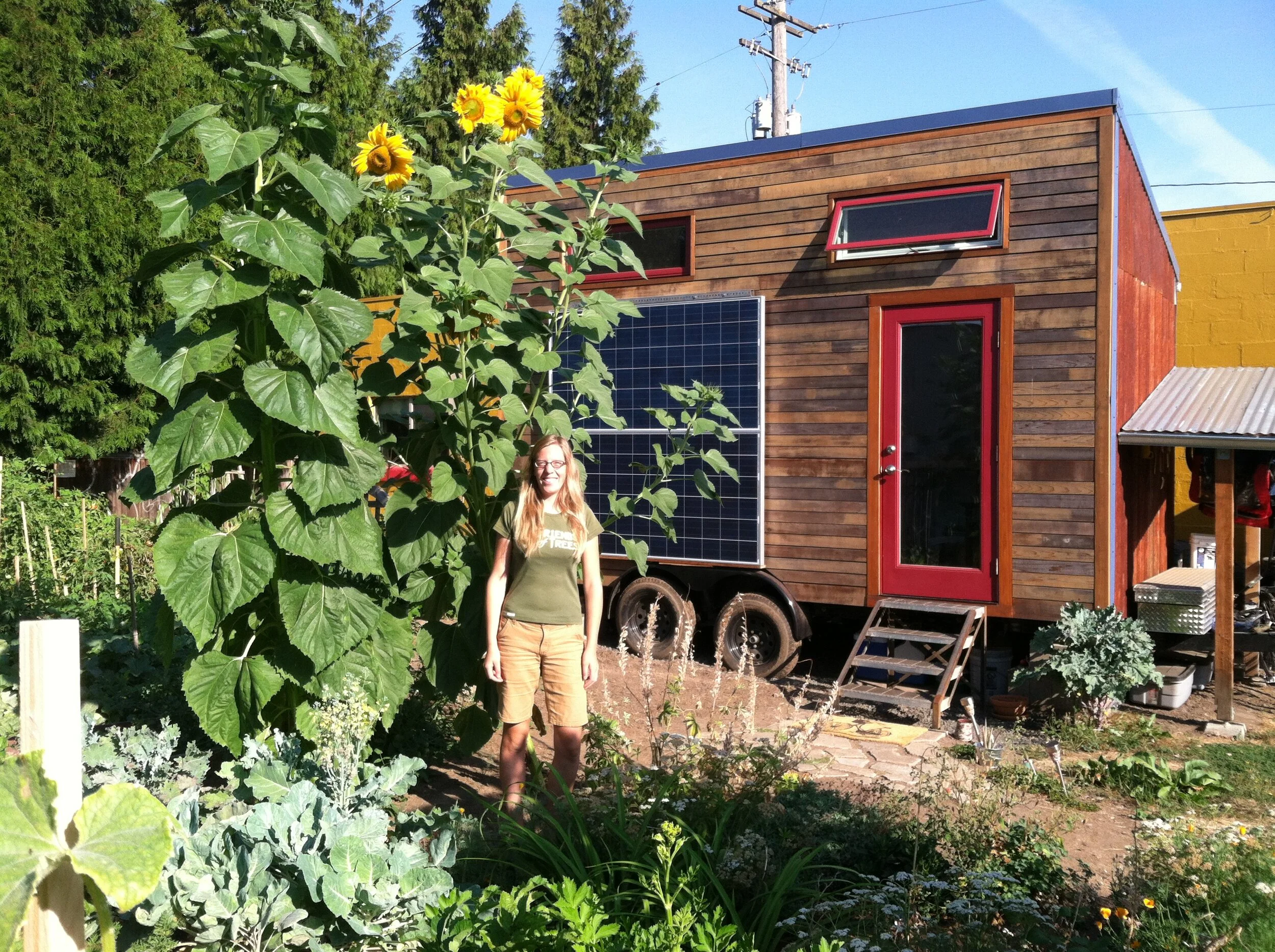Wow! It's been another month since I last posted. Many life events have happened in the last few weeks including paying off my last student loan (yay, no debt!), buying a piano, starting welding classes, working on the garden and the front yard, and finding a female electrician to work with to help me plan and wire my house!
Since I was hesitant to install any propane appliances in my home, I went all electric (for now anyway). Fire hazard safety and cost were both on my mind in this decision. Since then, I have decided that I would be ok with propane because my electrical loads are actually higher than I realized they would be (we designed to code). I originally thought I would have a 30-50 amp panel since that is typical to small homes, boats and RVs. That size of service makes it easy to plug into standard RV or dryer hookups.
What I actually needed (to code) were six 20 amp circuits (the outlets and light could have been on a 15 amp circuit but for ease of buying and installing the same wire size we kept it at 20) in a 125 amp panel. This size of panel is standard for some "normal" size homes and while it may seem overkill for a small house, when you think about it, it makes sense.
Here's the breakdown for each circuit:
1. Bosch Tronic 8 gal point of use water heater - 1440 watts
2. Kenmore mini fridge - 1725 watts
3. Kitchen GFCI and Panasonic bath fan (17 watts)
4. Kitchen GFCI (Code requires 2 and you can't run an induction cooktop (Nuwave: 1300 watts) and tea kettle (1250-1500 watts) at the same time on one circuit for example. I also have a popcorn popper which runs at 1440 watts.)
5. Space heater (can be used as a regular outlet for much of the year) - 1500 watts
6. Outlets and one hardwired light fixture and switch
Realistically, I am not going to be using anywhere near the full capacity of the system since I shower elsewhere (low hot water use), cook infrequently or outside on my RV/boat stove, barely used a space heater this past winter (due to warmer temps as well as a well sealed and insulated shell, even with a window open) and plan to use solar to power my phone, laptop, lights and other small electronics. I'm learning that solar can effectively be used to completely power a home, including heating needs, as long as there is space for a large enough solar array, which I plan to do when I purchase land eventually.
Once we calculated the loads, I drew up a map of the conduit runs since everything is surface mounted. We bought around $400 of materials (conduit, straps, couplers, boxes, outlets, switches, wire, panel, breakers, etc.) and got to work!
I was mainly in charge of screwing a ground pigtail to each box, knocking out circles in the boxes and installing set screw connectors to connect the box to the conduit and to protect the wire from rough edges. The electrician bent the conduit to round corners as well as to do each box offset. Once we had all of the boxes and conduit installed, then we pulled the 12 gauge wire, ensuring to keep each circuit labeled and separate. We used solid (vs. stranded wire) because it is more typically used in homes and because we had relatively short runs. Solid wire is more difficult to pull than stranded and when we packed a 1/2" conduit run with the max of 9 conductors, it was much harder than stranded from her experience. Luckily, there was only one section with 9 conductors so the rest was relatively easy. We used fishing wire to pull it through the conduit in the tighter runs and also for the longer run to the bath fan and humidity sensor.
After we ran all of the wire, we wired up all of the boxes for the outlets, light switch, humidity sensor, and hardwired the bath fan and water heater. Since we used the shallowest boxes possible for the lowest profile, it was a little difficult to install the quad outlets but it all worked out. I am also very happy with the Decora style rectangular outlets which more closely match my design aesthetic. It was very exciting to get everything installed including my awesome ceiling light fixture (IKEA), loft outlet with USB ports and finally cutting a hole through my bathroom wall for the fan (quite an undertaking).
We wired up the panel last, connecting the ground and neutral wires to the panel and the hot wires to the breakers which clip into the panel. Next steps are bringing power out to the yard and then figuring how to connect my house. The current plan is to try out a 50 amp RV style power cord and see if I trip any breakers!










